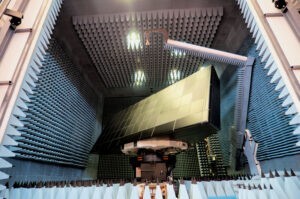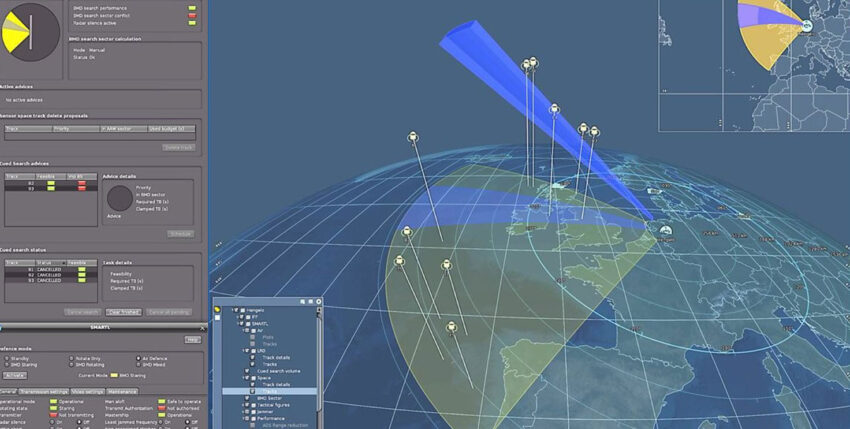Important decisions made in the Alliance - In the fourth quarter of last year, two important decisions were made - largely unnoticed by the public - that will shape the future of sea-based air defence in NATO Europe. The following article deals with the selection decision by the Inspector General of the Bundeswehr to replace the long-range radar on the SACHSEN-class frigates (F124) and the extension of the work assignment for the German-led multinational project group working on the capability contribution to ballistic missile defence.
Replacement of the wide-range sensor F124 necessary
On 1 December 2016, the Inspector General of the Bundeswehr signed the selection decision on the proposed solution in the project "Obsolescence elimination and capability enhancement in air defence". Frigate 124". Behind this word monster is the replacement of the SMART-L air surveillance radar of the three frigates, which has become necessary for technical and logistical reasons F124 of the German Navy.
As a result of the Netherlands' decision to Frigates of the DE-ZEVEN-PROVINCIEN class to the new SMART-L EWC1, the German SMART-L radars will run into a technical-logistical bottleneck (obsolescence) from around 2020, which will jeopardise the operational capability of the ships. The same threat looms for the three Danish Frigates of the IVAR-HUITFELDT class. In order to avert this obsolescence and at the same time respond to new NATO tasks in ballistic missile defence, the necessary administrative steps were taken as part of the CPM (mod.) armament process via a corresponding naval initiative.2 which led to the submission of three proposed solutions:
- Pure obsolescence elimination without capability enhancement, i.e. an air surveillance radar without capabilities in the detection of ballistic missiles outside the atmosphere;
- Eliminating obsolescence and expanding capabilities through market-available technologies;
- Elimination of obsolescence and expansion of capabilities through new technologies to be developed.
Sensor capability extension decided

Following intensive studies and investigations, which analysed costs, performance, technical risks and the least possible impact on the availability of the Frigates in connection with the conversion, the planning department at the Federal Ministry of Defence recommended a decision on the second proposed solution to the Inspector General in November 2016. He followed this proposal with his signature on 1 December.
A performance specification will now be drawn up to enable potential providers to submit an offer. Subsequent product selection, contract design and implementation could then be used for scaffolding on the German market from 2021. Frigates lead. The Netherlands is already planning to install SMART-L EWCs on its vehicles from 2019. Frigates. Denmark is still in the decision-making process.
For the German Armed Forces, the decision to expand its capabilities means entering into a sensor capability for the upper interceptor layer outside the atmosphere, i.e. into space.
High relevance for NATO
The Bundeswehr is thus fulfilling a key NATO expectation in connection with the NATO BMD3 programme. Since May 2015, Germany has been leading a corresponding project group on the sensor contribution, in which the Netherlands and Denmark are also involved. This "Upper Layer" project group works within the framework of the Framework Nation Concept, a framework agreement with Germany as a neighbouring nation4. The focus of this multinational cooperation has so far been a sensor contribution for early warning for NATO air defence and for target designation for US interceptor missiles in the upper interceptor layer. This sensor contribution is urgently needed in order to better utilise the capabilities of these interceptor missiles and to increase the area protected by them.
Extended order due to Belgian plans

On 26 October 2016, the steering committee of the Framework Nations Concept approved Belgium's request to become a member of the "Upper Layer" project group. The Belgian navy has the political mandate to work towards the new Frigates to equip an "exoatmospheric interceptor". The Belgian membership extends the mission of the now quattro-national Belgian-German-Danish-Dutch project group from a pure sensor contribution to the creation of a full capability (sensor & effector) as an independent European contribution to NATO BMD.
This working group already met in December 2016 and February 2017 to realise the goals that had been set:
- Common approach to the technical realisation of the sensor contribution as far as possible;
- Joint development of an operational concept and application principles and procedures for sensor and effector integration;
- Joint training.
The overarching goal is to provide NATO BMD with a coherent European capability under the motto "One Plug - One Manual".
The author is a department head in the Planning Division, Future Development Group of the Naval Command.
Author: Andreas Uhl
Notes:
1 Early Warning Capability
2 Customer Product Management, modified
3 Ballistic Missile Defence
4 cf. Marineforum 11/2015, A. Uhl, "Ballistic Missile Defence - The German leadership role in European capability development for missile defence in the upper interceptor layer"








